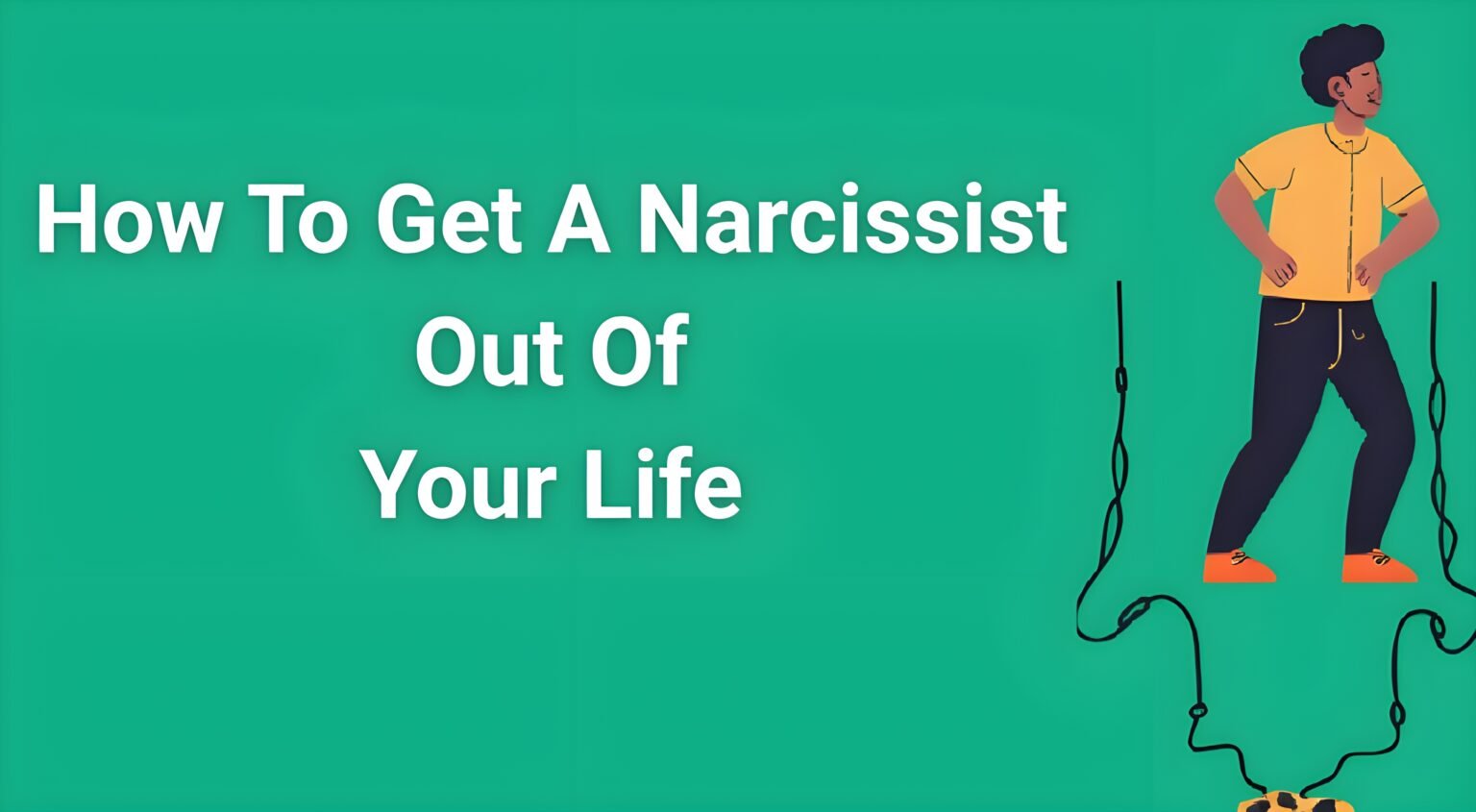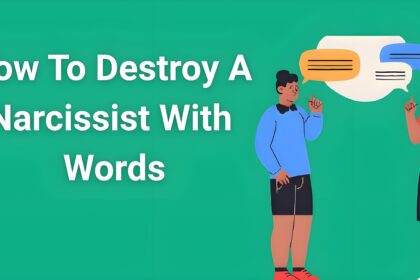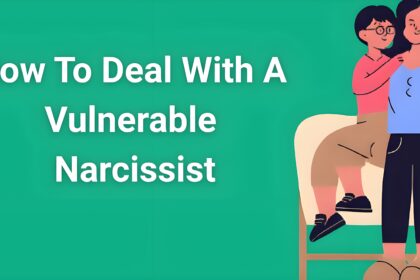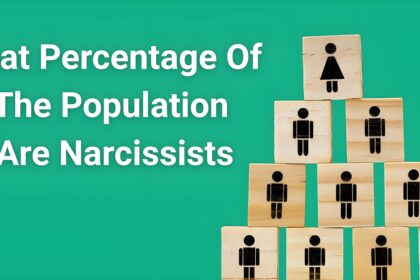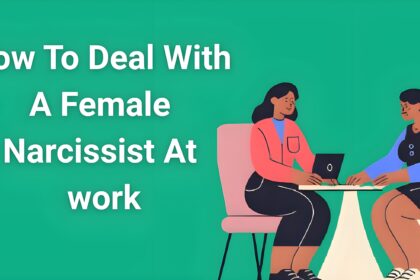If you're searching for ways to get a narcissist out of your life, you're already showing incredible strength by recognizing that something needs to change. The desperate late-night Google searches, the constant second-guessing of your own reality, and that sinking feeling that you're trapped in an endless cycle of emotional chaos—you're not imagining it, and you're definitely not alone.
- Understanding Why It’s So Hard to Get a Narcissist Out of Your Life
- The 7-Step Strategy to Safely Remove a Narcissist From Your Life
- Special Circumstances: When You Can’t Go Completely No-Contact
- The Science Behind Your Recovery
- Advanced Strategies for Persistent Narcissists
- Supporting Someone Else’s Escape Plan
- Recovery Resources and Next Steps
- Frequently Asked Questions
- Your Freedom Starts Now
Getting a narcissist out of your life requires more than just willpower or a simple breakup conversation. These relationships operate on a completely different psychological level, where manipulation, control, and emotional dependency create invisible chains that feel impossible to break. But here's the truth that might surprise you: thousands of people successfully escape narcissistic relationships every year, and with the right strategy, you can too.
This comprehensive guide will walk you through every step of safely and permanently removing a narcissist from your life, while protecting your mental health and rebuilding your sense of self. Whether you're dealing with a romantic partner, family member, friend, or coworker, these strategies will help you reclaim your power and freedom.
Understanding Why It's So Hard to Get a Narcissist Out of Your Life
Before diving into the practical steps, it's crucial to understand the psychological dynamics that make leaving a narcissist feel nearly impossible. This isn't a character flaw on your part—it's the result of calculated manipulation techniques that create powerful emotional bonds.
The Trauma Bond Trap
One of the biggest obstacles to removing a narcissist from your life is something called trauma bonding. This occurs when cycles of abuse are followed by periods of kindness, creating an addictive pattern in your brain similar to gambling or substance addiction. Your nervous system becomes wired to crave the relief that comes after intense stress, making you unconsciously seek out the very person who caused the trauma.
Research shows that trauma bonds activate the same neural pathways as cocaine addiction, which explains why “just leaving” feels impossible despite knowing the relationship is harmful. The intermittent reinforcement of kindness after cruelty literally rewires your brain to become dependent on the narcissist for emotional regulation.
The Erosion of Self-Trust
Narcissists are masters of gaslighting—a manipulation technique that makes you question your own memory, perception, and sanity. Over time, this constant reality distortion erodes your ability to trust your own instincts, leaving you dependent on the narcissist to define what's “real” or “normal.”
This is why many people stay in narcissistic relationships long after recognizing the abuse. When you can't trust your own judgment, making the decision to leave feels overwhelming and dangerous.
The Isolation Strategy
Narcissists systematically isolate their targets from support systems, often so gradually that you don't notice it happening. They might criticize your friends, create drama during family gatherings, or monopolize your time until maintaining other relationships becomes too exhausting.
By the time you realize you need to get the narcissist out of your life, you may feel like you have nowhere to turn for help—which is exactly what they intended.
The 7-Step Strategy to Safely Remove a Narcissist From Your Life
Step 1: Document Everything and Assess Your Safety
Before taking any action to get a narcissist out of your life, your safety must be the top priority. Narcissists often escalate their abusive behavior when they sense they're losing control, so preparation is essential.
Create a Documentation System:
- Start keeping a private journal (hidden or password-protected) of incidents, including dates, times, and details
- Screenshot threatening or manipulative messages
- Record instances of gaslighting or reality distortion
- Note any threats, whether direct or implied
Safety Assessment Questions:
- Has the narcissist ever been physically aggressive or threatened violence?
- Do they have access to weapons?
- Are there children involved who could be used as leverage?
- Do they control your finances, housing, or other essential resources?
- Have they threatened suicide or self-harm when you've tried to leave before?
If you answer yes to any of these questions, consider contacting the National Domestic Violence Hotline (1-800-799-7233) before proceeding. They can help you create a safety plan specific to your situation.
Step 2: Rebuild Your Support Network Secretly
One of the most effective ways to get a narcissist out of your life permanently is to rebuild your support system before you make your move. However, this must be done carefully to avoid triggering their defensive mechanisms.
Reconnect with Lost Relationships:
- Reach out to old friends or family members you may have lost touch with
- Be honest about your situation if you feel safe doing so
- Join support groups for narcissistic abuse survivors (many meet online for privacy)
- Consider working with a therapist who specializes in narcissistic abuse
Build New Connections:
- Engage in activities or hobbies that interest you
- Join community groups, classes, or volunteer organizations
- Develop relationships that exist entirely separate from the narcissist
Remember, narcissists often monitor their targets closely, so maintain these connections discreetly. Use private communication methods and avoid discussing your plans where the narcissist might overhear.
Step 3: Strengthen Your Financial Independence
Financial dependence is one of the most common reasons people struggle to get a narcissist out of their life. Many narcissists deliberately create financial dependence as a control mechanism, so reclaiming your economic freedom is crucial.
Financial Preparation Strategies:
- Open a separate bank account in your name only (consider using a different bank)
- Start saving money in small amounts that won't be noticed
- Gather important financial documents (tax returns, bank statements, insurance policies)
- Understand your rights regarding shared assets, property, or debts
- Research local resources for financial assistance if needed
Career Considerations:
- Update your resume and LinkedIn profile
- Network within your industry discreetly
- Consider additional training or certifications to improve your employability
- If the narcissist works at your company, research HR policies about workplace harassment
Step 4: Create Your Exit Strategy
A successful plan to get a narcissist out of your life requires careful timing and preparation. This step involves creating a detailed action plan for the actual separation process.
Timing Considerations:
- Choose a time when the narcissist is in a relatively stable mood
- Avoid major holidays, anniversaries, or stressful periods when possible
- Consider their schedule to minimize immediate retaliation opportunities
- Plan for when you'll have maximum support available
Logistics Planning:
- Identify where you'll go immediately after the confrontation
- Arrange temporary housing if needed
- Plan how you'll retrieve your belongings safely
- Prepare important documents and sentimental items in advance
- Consider whether you need legal assistance (restraining orders, custody arrangements)
Communication Strategy:
- Decide whether to have the conversation in person, over phone, or via text
- Prepare a simple, clear script that doesn't invite negotiation
- Plan how you'll handle their predictable responses (promises to change, threats, love-bombing)
Step 5: Execute the No-Contact Protocol
When you're ready to get the narcissist out of your life, implementing strict no-contact is often the most effective approach. This means cutting off all forms of communication permanently.
Complete Communication Shutdown:
- Block their phone number and social media accounts
- Change your email address or set up filters to automatically delete their messages
- Inform mutual friends and family that you don't want updates about the narcissist
- Consider changing your address if necessary
- Block their family members and flying monkeys who might relay information
Digital Boundaries:
- Remove them from all social media platforms
- Change passwords on all accounts they might know
- Review privacy settings to prevent them from gathering information about you
- Consider temporarily deactivating social media if they're monitoring you through fake accounts
The Hoovering Response: Expect the narcissist to intensify their efforts to contact you once they realize you're serious about cutting contact. This is called “hoovering” (like a vacuum trying to suck you back in). They might:
- Send gifts or love letters
- Show up at your workplace or home
- Use children or mutual friends to relay messages
- Create fake emergencies to force contact
- Alternate between apologies and threats
Stay strong during this phase. Every response you give, even to tell them to stop, resets their efforts and reinforces their belief that persistence will eventually work.
Step 6: Process the Trauma and Rebuild Your Identity
Getting a narcissist out of your life is only the beginning of your recovery journey. The psychological healing process requires dedicated attention and often professional support.
Understanding Your Healing Process: The end of a narcissistic relationship involves grieving multiple losses: the person you thought they were, the future you imagined together, and parts of yourself that were suppressed or damaged during the relationship. This grief is complicated by the fact that you're mourning someone who systematically harmed you.
Trauma Recovery Strategies:
- Work with a therapist specializing in narcissistic abuse and trauma bonds
- Practice grounding techniques for anxiety and panic attacks
- Develop new daily routines that prioritize your wellbeing
- Engage in activities that help you reconnect with your authentic self
- Consider trauma-informed therapies like EMDR or somatic experiencing
Rebuilding Your Identity: After months or years of having your reality distorted, rediscovering who you are takes time and patience. Start by:
- Exploring interests and hobbies you abandoned during the relationship
- Reconnecting with your values and beliefs
- Setting small, achievable goals to rebuild confidence
- Celebrating small victories in your recovery journey
During this phase, specialized resources can be incredibly valuable. Many survivors find that structured recovery programs, like comprehensive workbooks designed for trauma bond recovery, provide the daily guidance and exercises needed to rewire their thinking patterns and rebuild their sense of self.
Step 7: Develop Future Protection Strategies
Once you've successfully gotten the narcissist out of your life, the final step involves protecting yourself from similar relationships in the future. This isn't about becoming cynical or closed off—it's about developing healthy discernment and boundaries.
Red Flag Recognition:
- Love-bombing (excessive attention and gifts early in relationships)
- Pushing for quick commitment or exclusivity
- Isolating you from friends and family
- Gaslighting or making you question your memory/perception
- Extreme jealousy disguised as “caring”
- Inability to accept responsibility or apologize genuinely
Boundary Development:
- Practice saying “no” without extensive explanations
- Trust your instincts when something feels “off”
- Maintain independent friendships and interests in new relationships
- Communicate your needs clearly and expect them to be respected
- Set consequences for boundary violations and follow through
Ongoing Maintenance:
- Continue therapy or support group participation as needed
- Regularly check in with trusted friends about new relationships
- Stay educated about manipulation tactics and psychological abuse
- Practice self-care consistently, not just during crises
Special Circumstances: When You Can't Go Completely No-Contact
While complete no-contact is ideal for getting a narcissist out of your life, some situations make this impossible. If you share children, work together, or have other unavoidable connections, you'll need modified strategies.
Co-Parenting with a Narcissist
If children are involved, your priority shifts to protecting both yourself and your kids while maintaining necessary communication:
Structured Communication:
- Use only written communication (email or co-parenting apps)
- Keep all interactions strictly about the children
- Document everything for potential legal proceedings
- Set specific times for communication rather than being available 24/7
Child Protection Strategies:
- Avoid speaking negatively about the narcissistic parent to your children
- Teach your children emotional intelligence and critical thinking skills
- Create a stable, loving environment in your home
- Consider therapy for your children if they show signs of distress
Some survivors in this situation find it helpful to access resources specifically designed for those who can't leave immediately but need to protect themselves and their children. These resources provide strategies for maintaining sanity and safety while planning for eventual freedom.
Workplace Narcissists
If the narcissist is a coworker or boss, getting them “out of your life” might mean changing your approach rather than changing jobs:
Professional Boundaries:
- Keep all interactions strictly professional
- Document inappropriate behavior thoroughly
- Use email for important communications to create a paper trail
- Seek support from HR if policies are being violated
- Consider transferring departments if possible
Family Members
Narcissistic family members present unique challenges, especially if they're parents or siblings you're expected to maintain relationships with:
Modified Contact Strategies:
- Limit visits to specific occasions with predetermined time limits
- Never visit alone—bring a supportive friend or family member
- Refuse to engage in personal topics or discussions about your life choices
- Have an exit strategy for every interaction
- Consider “gray rock” techniques (being boring and unresponsive to manipulation attempts)
The Science Behind Your Recovery
Understanding the neurological changes that occur during and after a narcissistic relationship can help you be more patient with your healing process and recognize the signs of progress.
How Trauma Bonds Affect Your Brain
Research using brain imaging shows that trauma bonding creates literal changes in neural pathways, particularly in areas responsible for:
- Decision-making and judgment
- Emotional regulation
- Stress response
- Attachment and bonding
These changes explain why logical thinking feels impossible during the relationship and why leaving feels so terrifying despite knowing the relationship is harmful.
The Recovery Timeline
While everyone's healing journey is unique, research on trauma recovery suggests several predictable phases:
Immediate Phase (0-3 months): Focus on safety, basic self-care, and crisis management. Expect intense emotions, confusion, and physical symptoms of withdrawal.
Stabilization Phase (3-12 months): Emotional extremes begin to level out, daily functioning improves, and you start processing the relationship more clearly.
Integration Phase (1-2 years): You begin integrating the experience into your life story, develop new relationships, and feel confident in your ability to protect yourself.
Growth Phase (2+ years): Many survivors report feeling stronger and more self-aware than before the narcissistic relationship, with enhanced empathy and intuition.
Understanding these phases helps normalize the recovery experience and provides hope during difficult moments.
Advanced Strategies for Persistent Narcissists
Some narcissists are more persistent than others in their attempts to maintain control. If standard no-contact strategies aren't working, you may need more advanced approaches.
Legal Protection Options
When a narcissist refuses to respect your boundaries, legal intervention may become necessary:
Restraining Orders:
- Document all contact attempts and harassment
- Understand the specific requirements in your jurisdiction
- Prepare for the narcissist to potentially escalate before backing down
- Consider the pros and cons carefully, as some narcissists view legal action as a challenge
Stalking and Harassment Laws:
- Research your local laws about cyberstalking and harassment
- Keep detailed records of all unwanted contact
- Report violations to law enforcement consistently
- Consider consulting with an attorney specializing in domestic violence
Geographic Solutions
Sometimes getting a narcissist out of your life requires physical distance:
Strategic Relocation:
- Moving to a new city or state can provide the fresh start needed
- Research job opportunities and cost of living before relocating
- Build a new support network gradually
- Keep your new location private from mutual contacts initially
Professional Intervention
In extreme cases, professional intervention might be necessary:
Therapeutic Intervention: Some families choose to stage interventions with narcissistic relatives, though this requires careful planning with mental health professionals.
Workplace Mediation: HR departments or professional mediators can sometimes resolve workplace narcissism issues without requiring job changes.
Supporting Someone Else's Escape Plan
If you're reading this to help someone else get a narcissist out of their life, your support can be crucial to their success.
What TO Do:
- Listen without judgment when they're ready to talk
- Avoid giving ultimatums or pressure tactics
- Help them document incidents when they ask
- Offer practical support (housing, transportation, childcare)
- Continue being available even if they don't leave immediately
- Educate yourself about narcissistic abuse dynamics
What NOT to Do:
- Tell them “just leave” without understanding the complexity
- Criticize them for staying or returning to the relationship
- Try to convince them the narcissist is abusive—they need to reach this conclusion themselves
- Get involved in confrontations with the narcissist
- Share information about the victim with mutual friends
- Take over their decision-making process
Remember that leaving a narcissistic relationship is a process, not a single event. Most people make several attempts before successfully getting the narcissist out of their life permanently.
Recovery Resources and Next Steps
The journey to get a narcissist out of your life and rebuild your emotional wellbeing requires ongoing support and the right tools. While this guide provides a comprehensive foundation, having structured daily support can accelerate your healing process significantly.
Specialized Recovery Tools
Many survivors find that having a day-by-day recovery system helps them navigate the complex emotional terrain of leaving a narcissistic relationship. Programs specifically designed to address trauma bonding use neuroscience-based techniques to help rewire the brain patterns that keep you psychologically attached to harmful people.
For those dealing with particularly persistent narcissists or complex situations where complete no-contact isn't possible, specialized guides that address staying safe while planning your exit can be invaluable. These resources acknowledge that not everyone can leave immediately and provide strategies for protecting your mental health during the transition period.
Professional Support Options
Individual Therapy: Look for therapists who specialize in:
- Narcissistic abuse recovery
- Trauma and PTSD treatment
- Attachment disorders
- Complex trauma (C-PTSD)
Support Groups: Both in-person and online options exist for:
- Narcissistic abuse survivors
- Domestic violence survivors
- Co-dependency recovery
- General trauma recovery
Crisis Resources:
- National Domestic Violence Hotline: 1-800-799-7233
- Crisis Text Line: Text HOME to 741741
- National Suicide Prevention Lifeline: 988
Frequently Asked Questions
How long does it take to fully get a narcissist out of your life?
The timeline varies greatly depending on your circumstances, the length of the relationship, and whether children are involved. Complete no-contact can be established immediately, but psychological recovery typically takes 1-3 years. Having structured support during this time significantly accelerates the healing process.
What if the narcissist threatens suicide when I try to leave?
Threats of suicide are a common manipulation tactic used by narcissists to maintain control. If you believe the threat is genuine, contact emergency services (911) but do not let this threat prevent you from leaving. You are not responsible for another person's choices, and staying will not prevent them from harming themselves if they're truly suicidal.
Can a narcissist change if they get therapy?
While anyone can theoretically change with intensive therapy, true narcissistic personality disorder is notoriously resistant to treatment. Most mental health professionals agree that waiting for a narcissist to change is not a safe or realistic strategy. Focus on what you can control—your own choices and healing.
How do I know if I'm dealing with a narcissist or just someone having a bad time?
Everyone can display narcissistic traits during stress, but true narcissistic abuse involves consistent patterns of manipulation, control, and emotional exploitation over time. The key indicators include: systematic erosion of your self-esteem, isolation from support systems, gaslighting, and the feeling that you're constantly walking on eggshells.
What if our mutual friends don't believe me about the abuse?
Unfortunately, this is common because narcissists often maintain a charming public persona while reserving their worst behavior for private relationships. Don't waste energy trying to convince people who weren't there. Focus on building relationships with people who support and believe you.
Is it normal to miss the narcissist after cutting contact?
Absolutely. Missing someone who hurt you is a normal part of trauma bonding and doesn't mean you should return to the relationship. These feelings will diminish over time, especially with proper support and recovery work.
Your Freedom Starts Now
Getting a narcissist out of your life requires courage, planning, and support, but it's absolutely possible. Thousands of people successfully escape these relationships every year and go on to build healthier, happier lives.
The most important thing to remember is that you don't have to do this alone. Whether you're just beginning to recognize the patterns of abuse or you're ready to implement your exit strategy, there are resources and support systems available to help you through every step of the process.
Your instinct to search for ways to get the narcissist out of your life shows that your inner wisdom is still intact, despite months or years of manipulation designed to make you doubt yourself. Trust that instinct—it's leading you toward freedom.
The road ahead may feel challenging, but on the other side of this difficult journey lies a life where you can breathe freely, trust your own perceptions, and form healthy relationships based on mutual respect and genuine love. You deserve nothing less than complete emotional freedom, and with the right strategy and support, that freedom is within your reach.
Remember: leaving a narcissist isn't just about ending a relationship—it's about reclaiming your life, your sanity, and your future. Every step you take toward getting them out of your life is a step toward becoming the person you were always meant to be.

